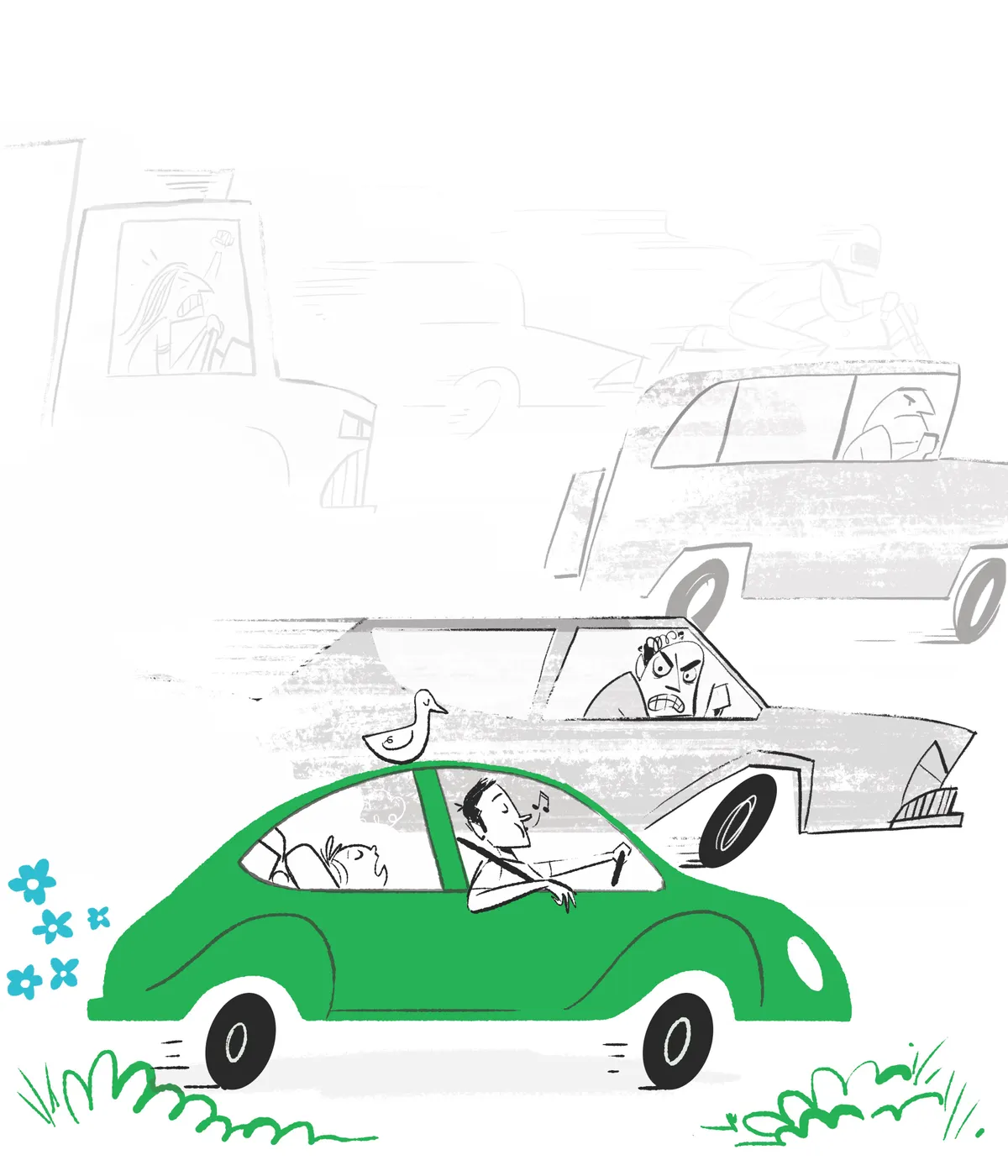1
Don’t washyour clothes
Or at least, not so often. A single load of laundry generates 600g of CO2, even if you wash at 30°C and dry it on the washing line. Tumble drying triples this. But the United Nations Environment Program and Levi’s Jeans both agree that you can wear trousers and skirts at least five times before washing them. The same goes for wool and synthetic sweaters, jackets and sweatshirts.
If every household in the UK saved a whole laundry load per week, we would slash CO2 emissions by 840,000 tonnes a year. For ordinary laundry, halving the amount of detergent will leave your clothes just as clean while reducing the phosphates that end up in our rivers. These cause algal blooms that kill fish and inhibit the natural biodegradation of organic substances.
2
Use a milkman
Supermarkets will only sell you milk in plastic jugs,or cartons made of laminated cardboard andplastic. But local milk delivery companies, such asmilkandmore.co.uk, are starting to bring the glassmilk bottle back to your doorstep.
Glass now takes half as much energy to produce per tonne as it did 30 years ago. Recycling milk bottles is also much greener than other bottles because they can be washed and reused, rather than melting them back down to raw glass. Glass milk bottles, reused five times, generate 17 per cent less CO2 per litre of milk than single-use plastic jugs. This rises to 60 per cent savings after 20 uses. You can even extend your breakfast laziness and get fruit juice delivered in glass bottles too.
3
Use a dishwasher
Washing up by hand can use less energy than running a dishwasher, but only with an efficient technique. If you rinse the plates and dishes under a hot tap and change the water in the bowl a few times, your handwashing session can generate 8kg of CO2, compared with 1kg for a dishwasher cycle at 65°C. Using the dishwasher’s ‘eco’ cycle will drop the washing temperature to 55°C and this reduces the carbon footprint by another 20 per cent. Loading and unloading the dishwasher also takes just a quarter of the time of doing the washing up.
Remember, though, that dishwashers are only efficient when they are fully loaded. Soak dishes in cold water or run a cold rinse cycle, while you wait for enough dishes to run a full load.
4
Work from home

The average commute time in the UK is 27 minutes each way. That’s almost an hour every day that could have been spent in bed or with your family if you worked from home. Telecommuting isn’t just easier, it’s often more productive too. Studies have found homeworkers take just 1.8 sick days per year, compared with 3.1 for those in the office.
Staying at home obviously reduces your total car miles, but companies with lots of telecommuters can also manage with smaller offices, which saves on heating and air conditioning costs. And your lunchtime salad or sandwich is less likely to come wrapped in lots of plastic. Overall, working from home just three days a week reduces your carbon footprint by the equivalent of four tonnes of CO2 a year.
5
Move in together
A 2015 study at Dickinson College, Pennsylvaniain the US found that living with someone reduces your overall carbon footprint by 23 per cent, compared with living alone. Part of this is the obvious energy saving of heating just one house instead of two. Couples who live together also don’t tend to go out in the evening as much, which cuts down on travel emissions.
If you’re worried about the effect on your relationship, the Marriage Foundation found that the ideal frequency for date nights was just once a month. If your retired parents move in, you’ll cut down on even more unnecessary car mileage. Not only will you have weekday childcare right on the premises, but there will be no need for any long journeys at Christmas.
6
Don’t mow yourlawn so often
Although growing plants absorb CO2, a perfectly manicured lawn actually generates more greenhouse gases than it absorbs. An electric mower used for an hour, once a week through the growing season, results in an extra 15kg of CO2 per year. Adding nitrogen-based lawn feeder makes things worse because some of the fertiliser breaks down to nitrous oxide which is 300 times more potent a greenhouse gas than CO2.
Mowing once a fortnight is plenty, and if you leave the grass clippings on the ground, they will fertilise the soil just as effectively. Or kick back completely and swap your lawn for a wildflower meadow. By mowing just three times a year you’ll boost plant biodiversity and encourage bees and butterflies.
7
Drive slower

Driving at 60mph (97km/h) instead of 70mph (113km/h) on the motorway uses 10 per cent less fuel but has negligible impact on your journey time. On empty roads, the journey from Bristol to London would theoretically take you an extra 16 minutes. But in normal traffic, we tend to accelerate until we catch up to the car in front, then brake to match speed until a gap in the overtaking lane appears, before accelerating away again. This driving style is much more stressful and uses more fuel because you are constantly accelerating and braking.
Studies have found that typical journeys are just two minutes longer on average when driving at a steady 60mph and you’ll save 0.8 litres of petrol for every 60 miles (100km) you drive. If every driver in the UK drove like this, it could save 810,000 tonnes of CO2 per year. That’s as much as a small gas-fired power station.
8
Bank online
The UK financial sector generates around 160g of CO2 for every £1 we pay them in mortgage payments, loans, etc. Even though their business mostly consists of electronic data transfers, they still use energy to run the branches and offices.
Banking online is more convenient and reduces the number of branches the bank needs to keep open. Security vans don’t need to make as many trips to refill cashpoints if you use contactless payments with your card or phone. Plus, 10 per cent of the financial sector’s carbon footprint goes on printing and postage, so opting out of paper statements will reduce emissions too.
9
Stop shaving

Worldwide, roughly 40 billion disposable razors are thrown away every year. They can’t be recycled so they just end up in landfill, or worse, in the sea. The carbon footprint of wet shaving mostly comes from the hot water you use; switching to an electric shaver, which is less hassle, will use just 3 per cent of the electricity. That adds up to around 156,000 tonnes of CO2 per year across the UK. If you abandon shaving altogether, you can also save the 0.95kg CO2 from the shaver’s manufacture.
For women, the least environmentally-friendly option is to shave your legs in the shower. Every minute you spend shaving generates 240g CO2 from the extra running water. Wait until you’re having a relaxing bathanyway and then you won’t use anyadditional hot water.
10
Skip holidays
One return flight to the Canary Islands adds the equivalent of almost a tonne of CO2 to your carbon footprint. That’s as much as you’ll generate in six months of driving your car. Not only does air travel affect the climate more than all the world’s cars, it is also the most exhausting part of going on holiday.
If you travel to Europe by train you can be in Barcelona in nine hours. This is actually almost as fast as flying, once you factor in airport parking, check-in, security and baggage reclaim. Or give yourself the luxury of unlimited baggage allowance and take a cruise. You can sail across the Atlantic to New York in two weeks and turn the journey into the holiday.
Follow Science Focus onTwitter,Facebook,InstagramandFlipboard
